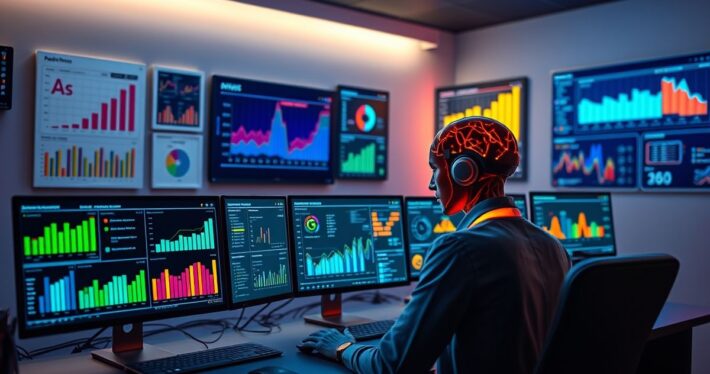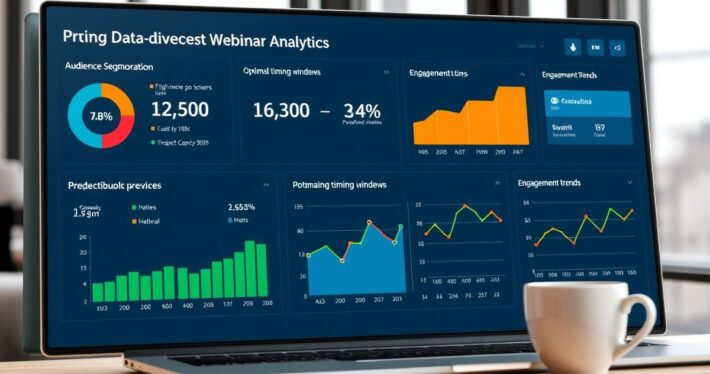The role of machine learning in advanced webinar optimization.

The Role of Machine Learning in Advanced Webinar Optimization
Machine learning is revolutionizing the way we approach webinar optimization, offering unprecedented opportunities to enhance engagement, personalize content, and drive conversions. By leveraging data-driven insights and automated processes, machine learning enables marketers to create highly effective webinars that resonate with their audience. This article explores the various ways machine learning is transforming webinar optimization, providing actionable strategies and real-world examples to help you stay ahead of the curve.
Understanding Machine Learning in Webinar Context
Before diving into the specifics, it’s essential to grasp what machine learning entails in the context of webinars. Machine learning (ML) is a subset of artificial intelligence that uses algorithms to analyze data, learn from it, and make predictions or decisions without explicit programming. In webinar optimization, ML can analyze attendee behavior, predict engagement patterns, and automate content adjustments to maximize effectiveness.
Personalized Content Creation
One of the most significant advantages of machine learning in webinar optimization is the ability to create personalized content. Traditional webinars often follow a one-size-fits-all approach, which can lead to disengagement and lower conversion rates. Machine learning, however, enables the creation of tailored content that addresses the specific needs and interests of individual attendees.
For example, ML algorithms can analyze attendee data, such as past interactions, preferences, and demographic information, to predict what topics or formats will resonate most. This allows for dynamic content adjustments, such as personalized slides, targeted messaging, and customized offers, enhancing the overall attendee experience.
Predictive Analytics for Audience Segmentation
Predictive analytics is another powerful application of machine learning in webinar optimization. By analyzing historical data and identifying patterns, ML algorithms can segment the audience into distinct groups based on their likelihood to engage, convert, or churn. This segmentation enables marketers to design targeted strategies for each group, improving the effectiveness of their webinars.
Consider a case study where a company used machine learning to segment webinar attendees into three categories: high-engagement, medium-engagement, and low-engagement. By tailoring the content and follow-up strategies for each segment, the company saw a 25% increase in overall engagement and a 15% boost in conversions.
Automated A/B Testing and Optimization
A/B testing is a common practice in marketing to determine which version of a campaign performs better. However, conducting manual A/B tests can be time-consuming and resource-intensive. Machine learning automates this process, enabling continuous testing and optimization of webinar elements such as titles, descriptions, visuals, and CTAs.
ML algorithms can rapidly analyze the performance of different variations and identify the most effective ones, allowing for real-time adjustments. This not only saves time but also ensures that your webinars are always optimized for maximum impact.
Enhanced Engagement through Chatbots and Q&A Automation
Engagement is crucial for the success of any webinar. Machine learning can enhance engagement by powering intelligent chatbots and automating Q&A sessions. These tools can analyze attendee questions, provide instant responses, and even predict follow-up questions based on context.
For instance, an ML-powered chatbot can handle routine inquiries, freeing up the host to focus on more complex questions. Additionally, automated Q&A systems can prioritize questions based on relevance and popularity, ensuring that critical topics are addressed promptly.
Real-Time Sentiment Analysis
Understanding attendee sentiment during a webinar can provide valuable insights for optimizing future events. Machine learning enables real-time sentiment analysis by processing chat messages, feedback forms, and other interactions during the webinar.
By identifying positive, neutral, or negative sentiment, hosts can make on-the-fly adjustments to improve the attendee experience. For example, if sentiment analysis reveals dissatisfaction with a particular topic, the host can pivot to a more engaging subject or provide additional explanations.
Challenges and Considerations
While machine learning offers numerous benefits for webinar optimization, there are challenges to consider. Data privacy and security are paramount, especially when dealing with sensitive attendee information. Ensure that your ML tools comply with relevant regulations and employ robust security measures.
Additionally, the effectiveness of machine learning depends on the quality and quantity of data available. Inaccurate or insufficient data can lead to flawed predictions and suboptimal outcomes. Invest in data collection and preprocessing to maximize the potential of your ML initiatives.
Conclusion
Machine learning is a game-changer for advanced webinar optimization, offering tools and techniques that were previously unimaginable. From personalized content and predictive analytics to automated testing and real-time sentiment analysis, ML empowers marketers to create highly effective webinars that drive engagement and conversions.
By embracing these technologies and addressing potential challenges, you can stay ahead of the competition and deliver webinars that truly resonate with your audience. The future of webinar optimization is here, and it’s powered by machine learning.



